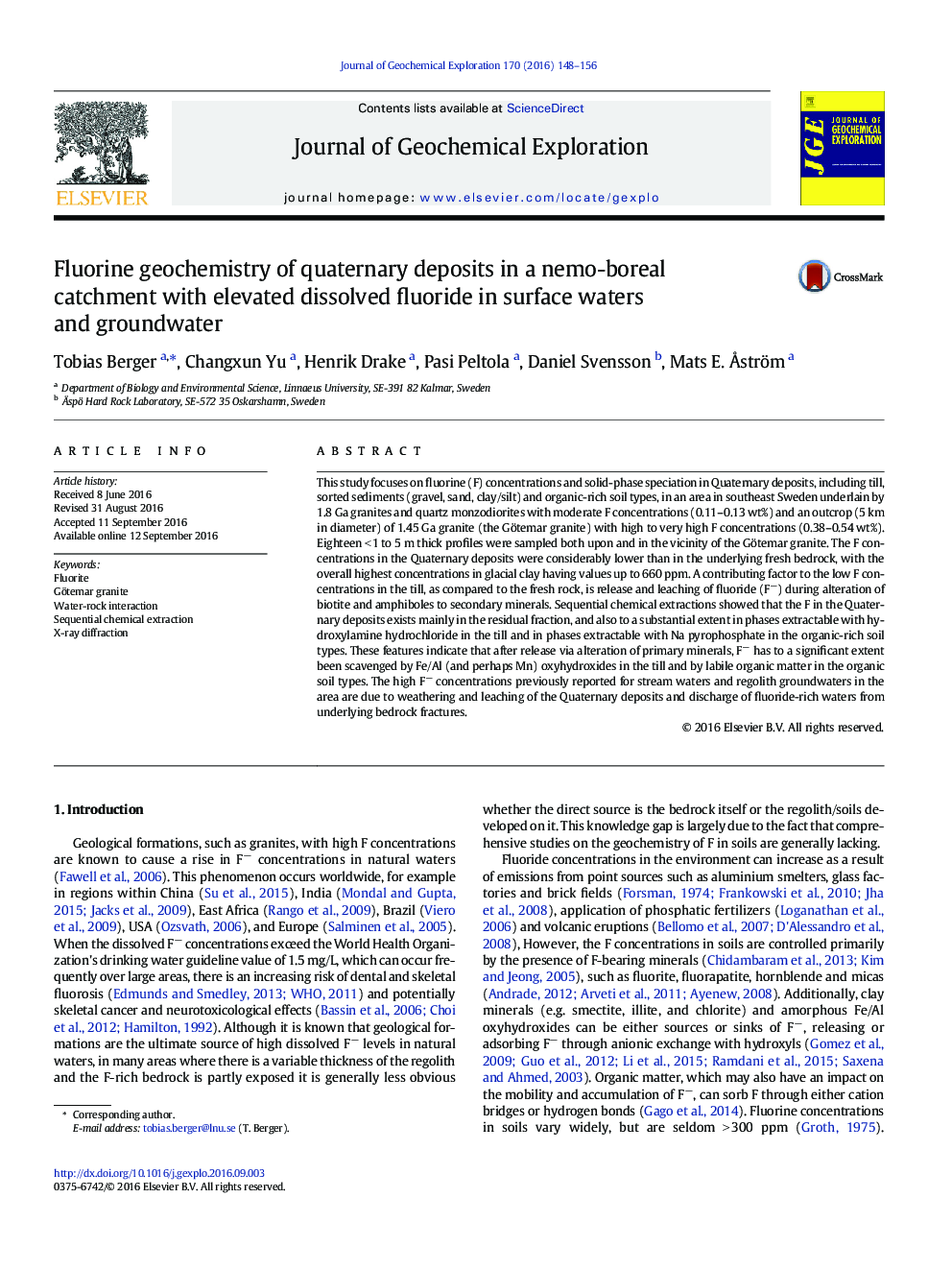| کد مقاله | کد نشریه | سال انتشار | مقاله انگلیسی | نسخه تمام متن |
|---|---|---|---|---|
| 4456889 | 1620889 | 2016 | 9 صفحه PDF | دانلود رایگان |

• Fluorine in Quaternary deposits was investigated in southeast Sweden.
• No correlation between F in Quaternary deposits and an F-rich granite intrusion.
• Parent bedrock minerals containing F have been readily weathered.
• Fluorine has been extensively scavenged by Fe/Al oxyhydroxides in till.
• Fluorine has been extensively scavenged by labile organic matter in organic soils.
This study focuses on fluorine (F) concentrations and solid-phase speciation in Quaternary deposits, including till, sorted sediments (gravel, sand, clay/silt) and organic-rich soil types, in an area in southeast Sweden underlain by 1.8 Ga granites and quartz monzodiorites with moderate F concentrations (0.11–0.13 wt%) and an outcrop (5 km in diameter) of 1.45 Ga granite (the Götemar granite) with high to very high F concentrations (0.38–0.54 wt%). Eighteen < 1 to 5 m thick profiles were sampled both upon and in the vicinity of the Götemar granite. The F concentrations in the Quaternary deposits were considerably lower than in the underlying fresh bedrock, with the overall highest concentrations in glacial clay having values up to 660 ppm. A contributing factor to the low F concentrations in the till, as compared to the fresh rock, is release and leaching of fluoride (F−) during alteration of biotite and amphiboles to secondary minerals. Sequential chemical extractions showed that the F in the Quaternary deposits exists mainly in the residual fraction, and also to a substantial extent in phases extractable with hydroxylamine hydrochloride in the till and in phases extractable with Na pyrophosphate in the organic-rich soil types. These features indicate that after release via alteration of primary minerals, F− has to a significant extent been scavenged by Fe/Al (and perhaps Mn) oxyhydroxides in the till and by labile organic matter in the organic soil types. The high F− concentrations previously reported for stream waters and regolith groundwaters in the area are due to weathering and leaching of the Quaternary deposits and discharge of fluoride-rich waters from underlying bedrock fractures.
Journal: Journal of Geochemical Exploration - Volume 170, November 2016, Pages 148–156